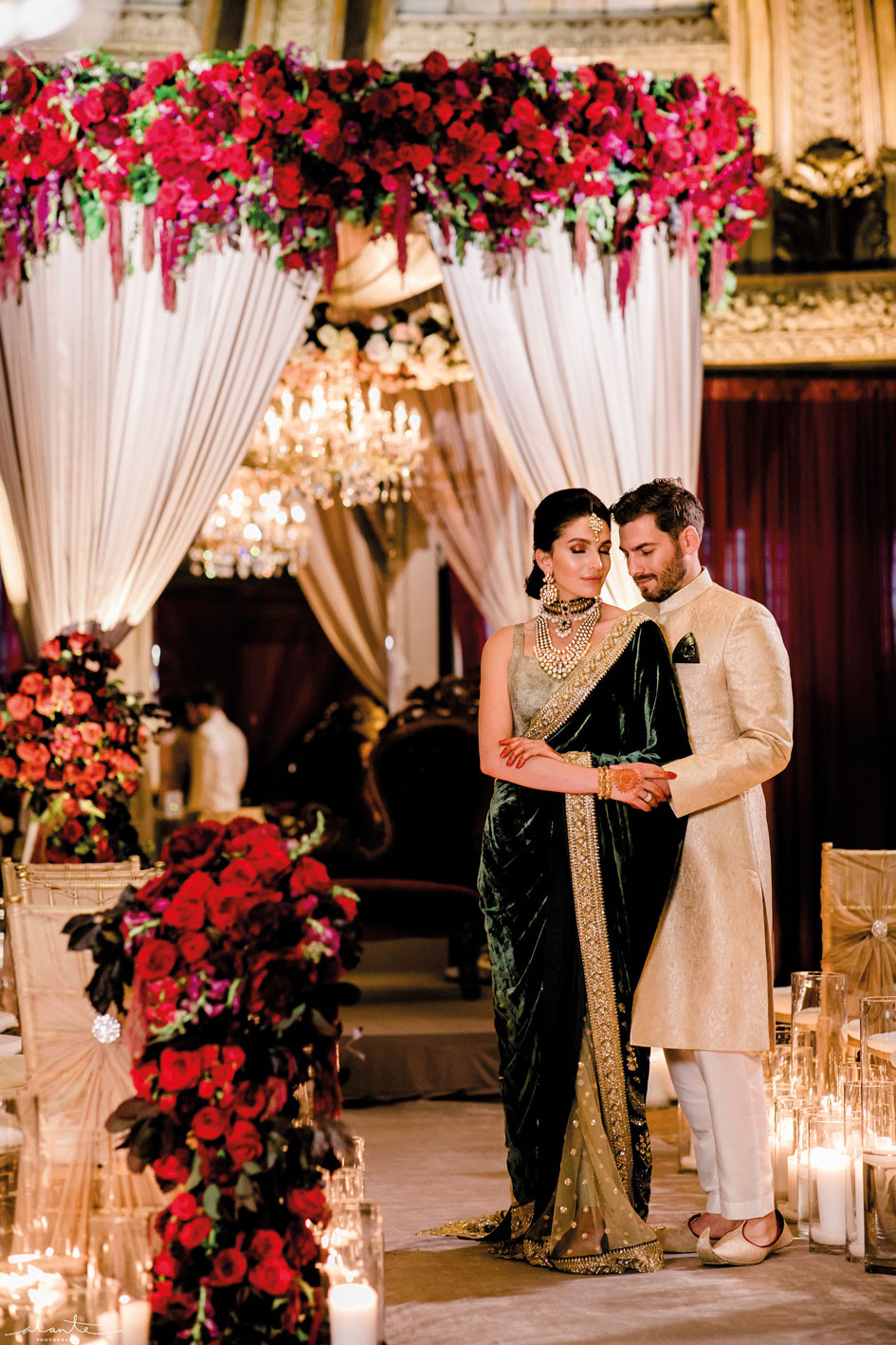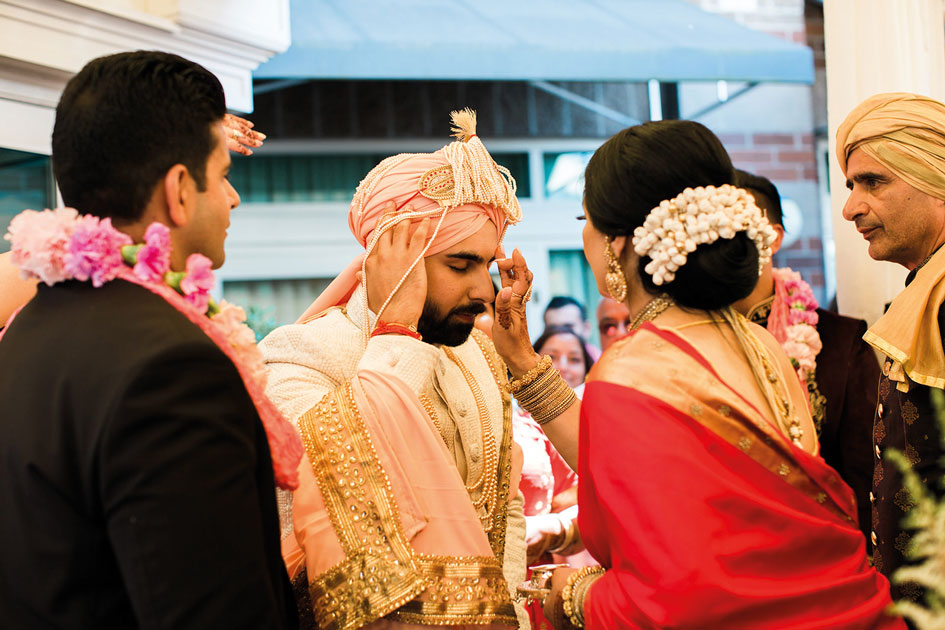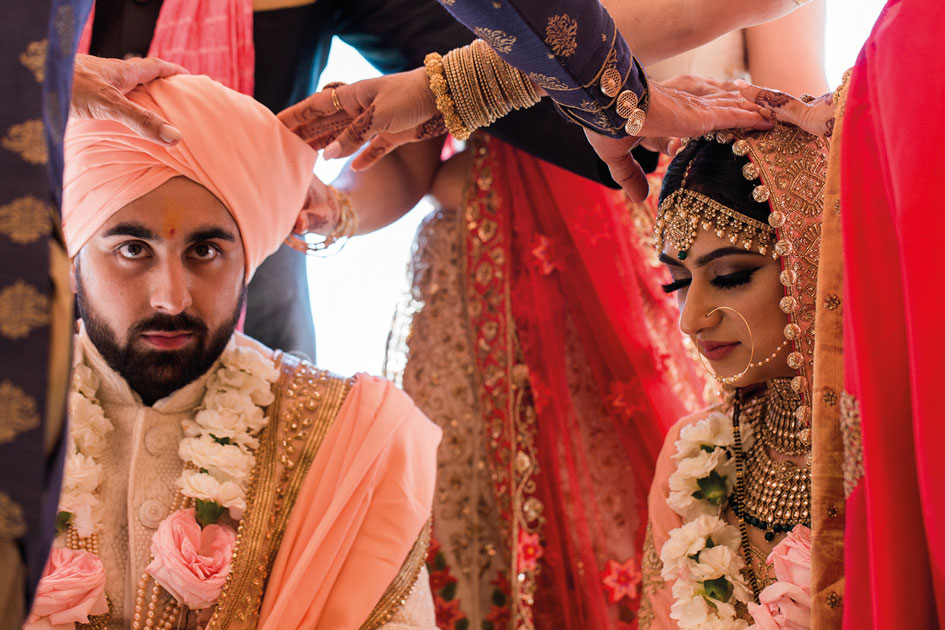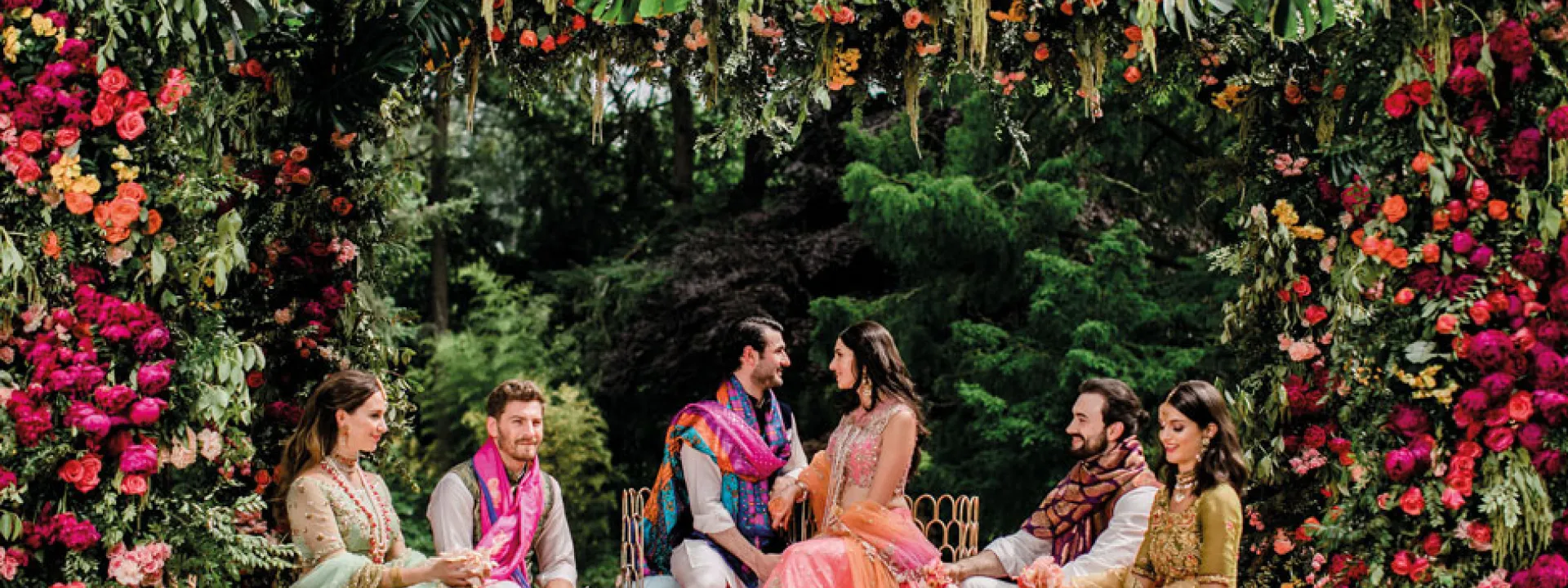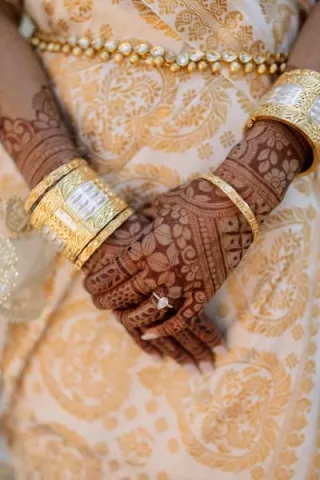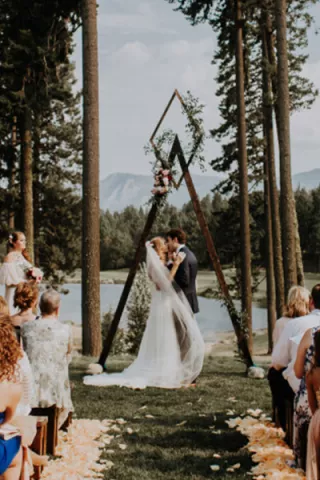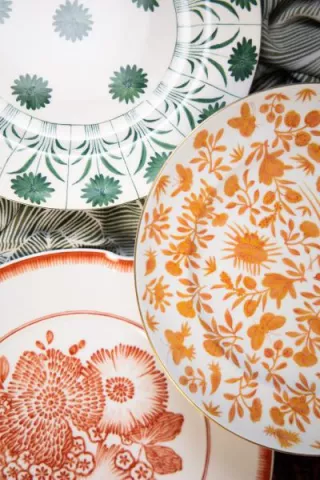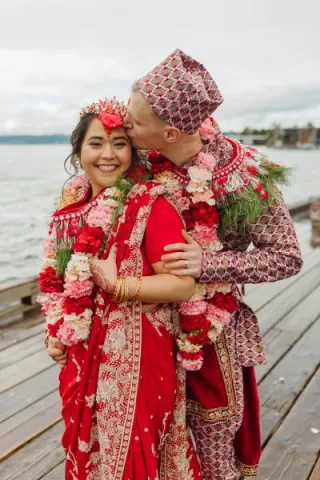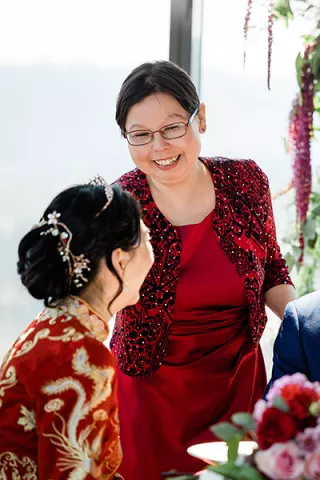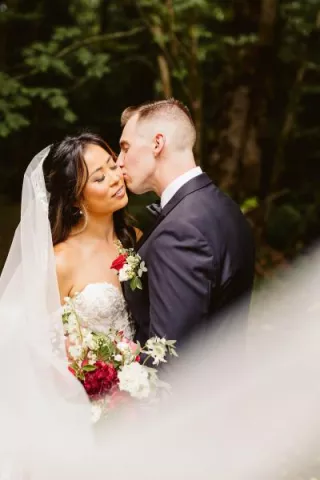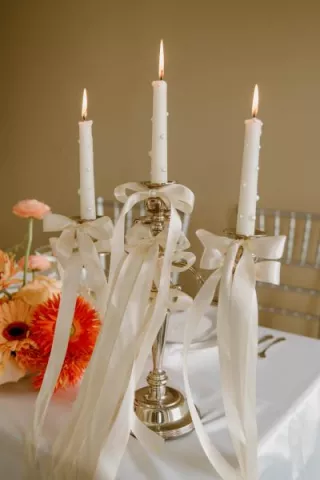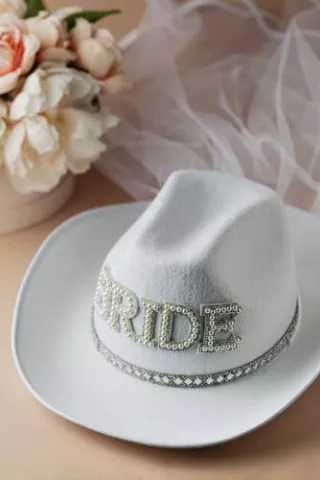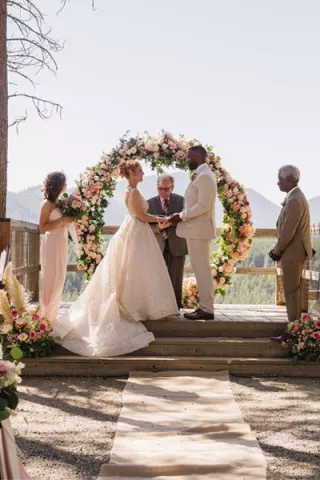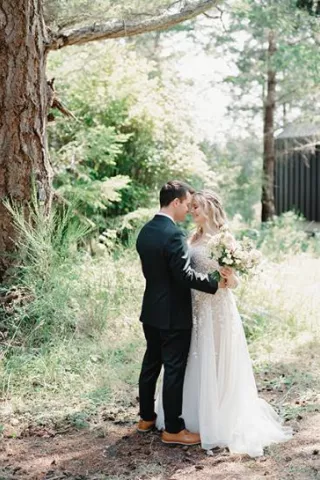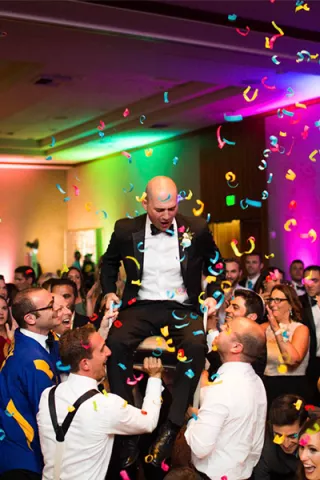As Seattle continues to grow—particularly as a more visible power player in the tech industry—that growth has been accompanied by an influx of new cultures, bringing with them wildly colorful and captivating wedding traditions. Marigold Design House is known for its richly detailed and exquisitely executed South Asian and cross-cultural weddings. Here, we follow along as co-owner and planner Aeisha Bhatti breaks down the three-day celebration and all of the rituals and traditions that make up a Hindu wedding in inspiration photo shoots and photos from a real local wedding.
DAY 1- Mendhi & Sangeet Celebrations
The mehndi celebration is part of a pre-wedding ceremony in which henna is applied to the bride’s hands and feet in intricate patterns. It’s believed that the deeper the color of the henna, the stronger the love will be between the husband and wife. The mehndi celebration marks the beginning of the wedding festivities. The sangeet, a Sanskrit word meaning “sung together,” is when the party begins, and its purpose is to celebrate the happiness and joy surrounding the couple. It includes the singing of traditional folk songs and dancing to music and drumming. This gathering serves to bring the two families together to become acquainted before the big day.
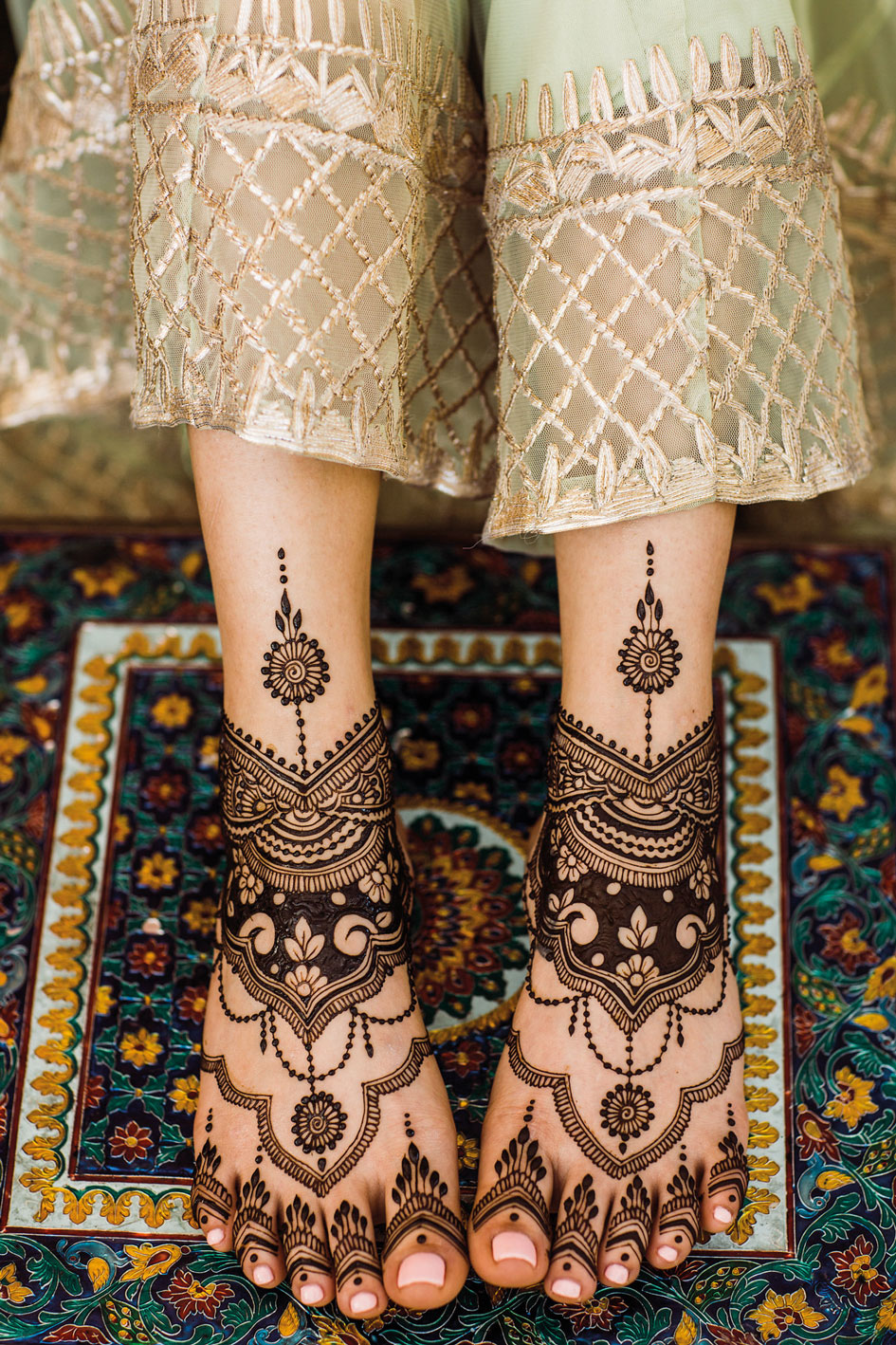
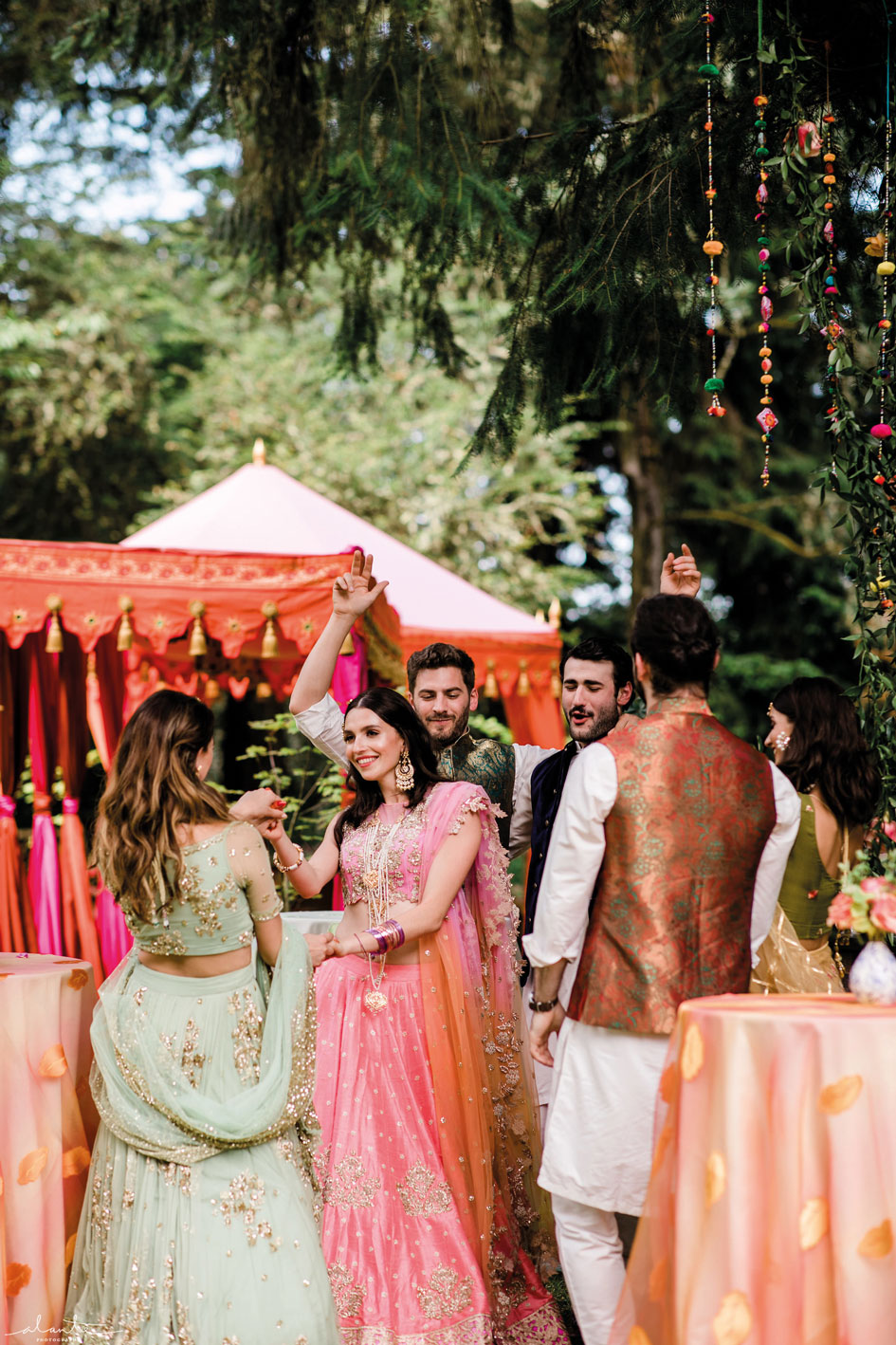
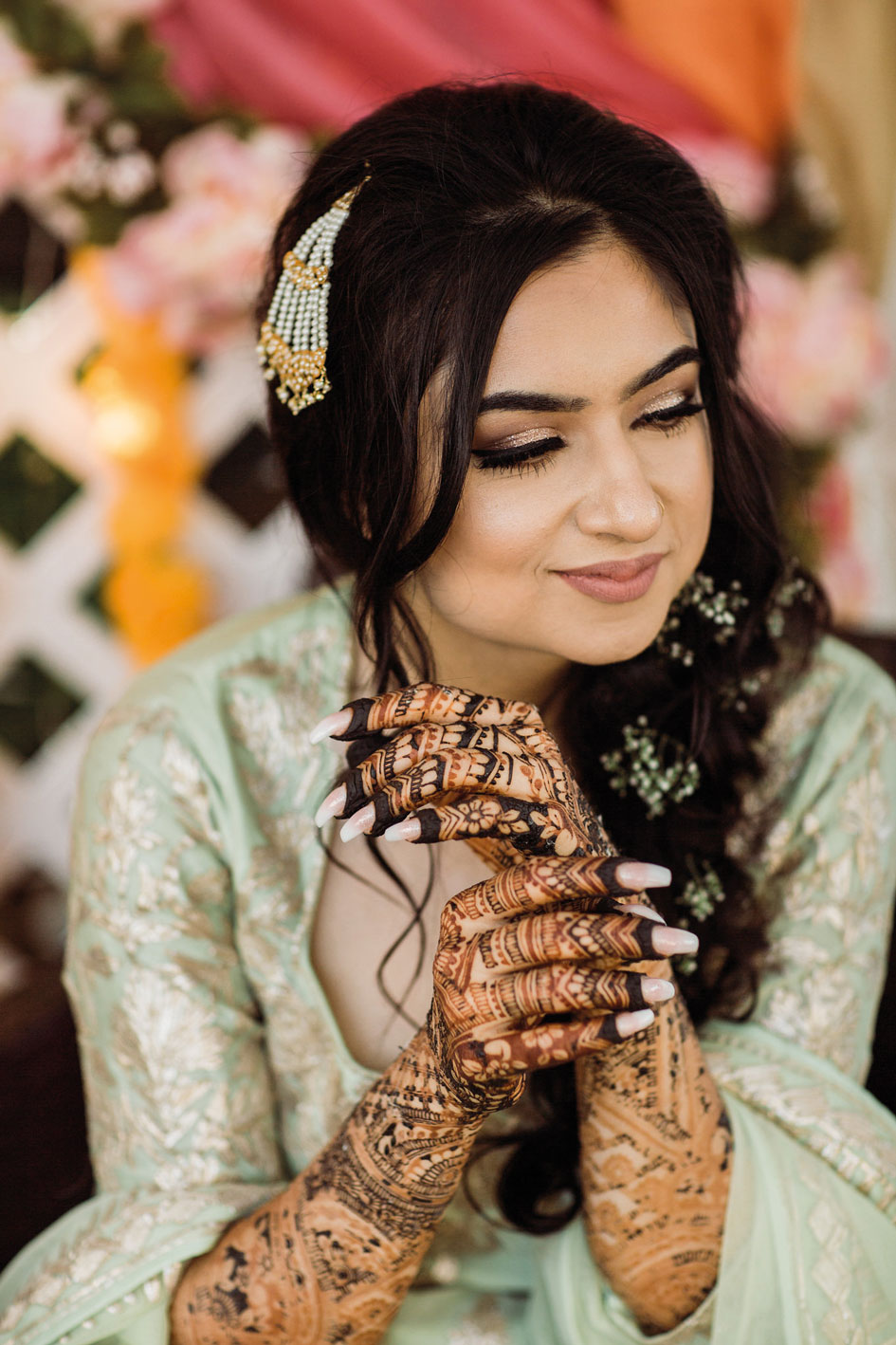

DAY 2 - Haldi
The haldi ceremony is a purifying and beautifying ritual for which a yellow mask is created by combining turmeric, chickpea flour, sandalwood powder, saffron, a tablespoon of fresh cream or milk and water or rose water. Using mango leaves, the mask is applied to the arms, legs and face to enhance the couple’s beauty before the wedding day.
The Choora Ceremony
In this ceremony, the bride dons a set of red and white bangles called a choora, which she will wear for 40–45 days after the wedding. The bracelets are first dipped in milk for purity and are meant to impart good health and fortune. The bride’s maternal uncle presents her with the wedding choora and places the set on her arms. The bride’s sisters then tie the bangles with kalire, umbrella-shaped charms that signify happiness and eternal love. Afterward, the bracelets are covered with a white cloth, and the bride is not allowed to see them until the wedding ceremonies on the next day.
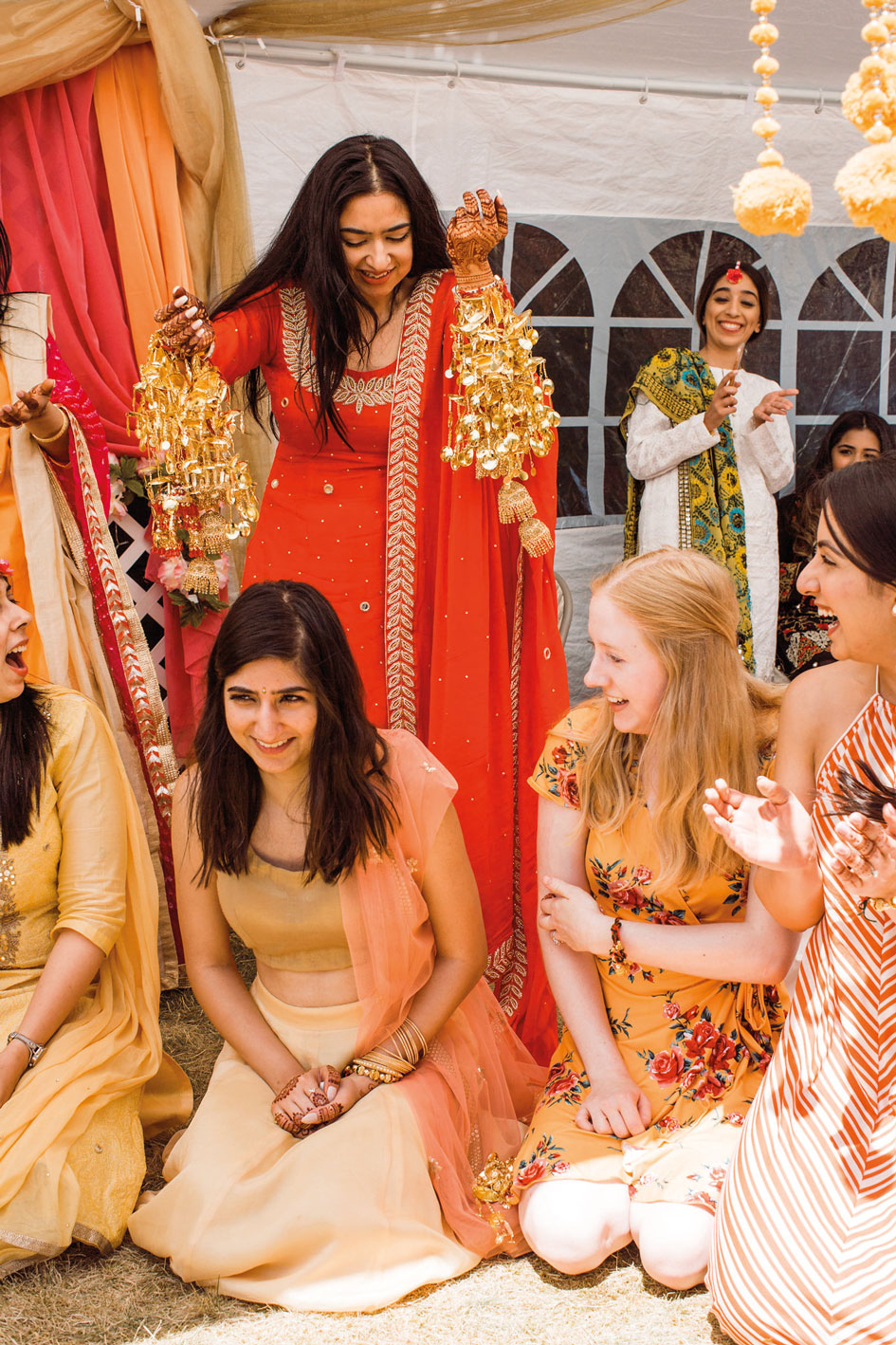
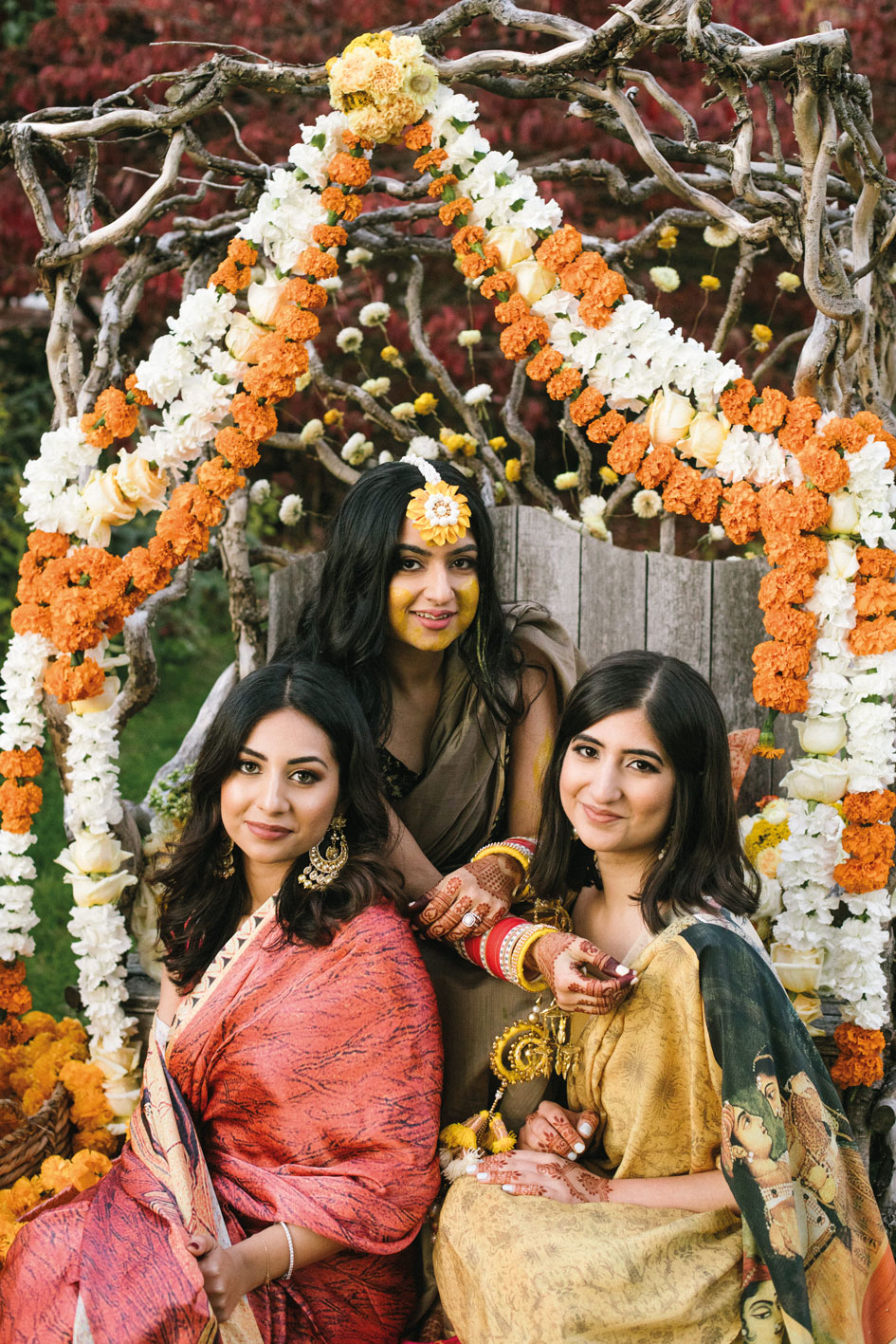 Aziz Studios
Aziz Studios
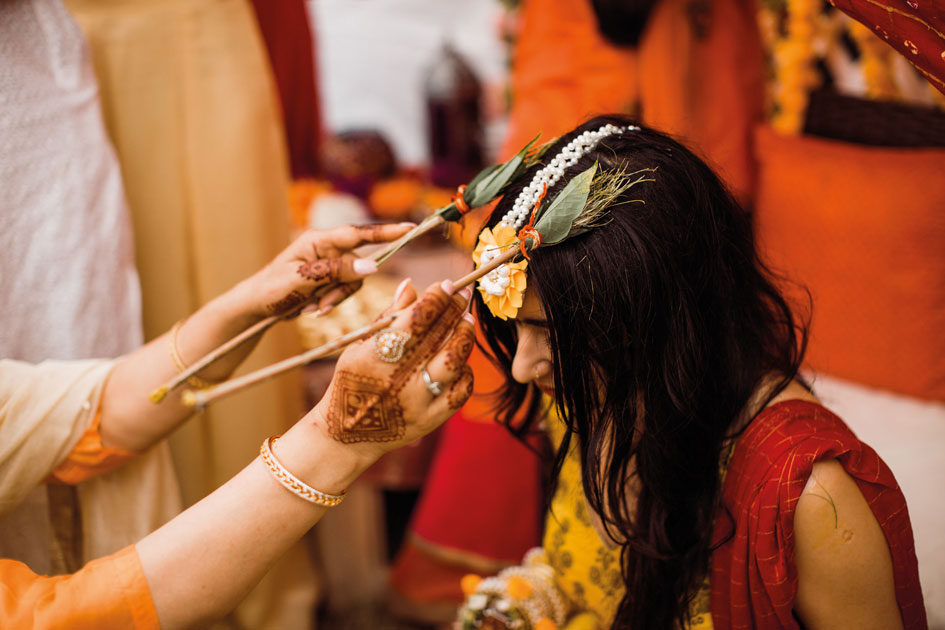
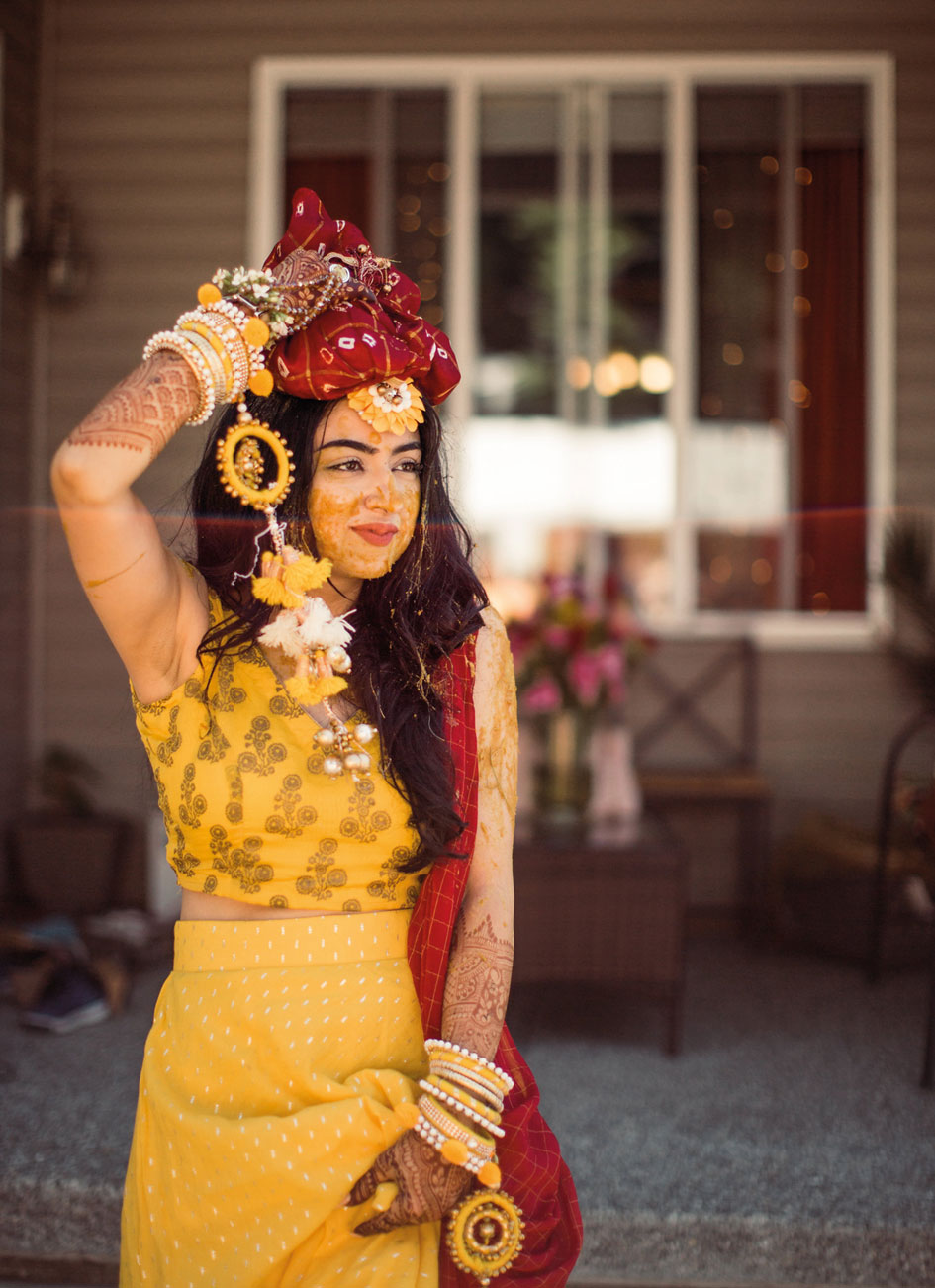
DAY 3 - Baraat
The groom is led to the wedding venue in a procession known as the baraat. He arrives wearing a sehra (traditional headdress), saafa (turban) and a sherwani (traditional frock coat). Family members, groomsmen and friends, referred to as baraatis, accompany him. While a white horse or elephant is the traditional mode of groom’s transportation, luxury cars are a more common modern substitute.
Milni
The milni ceremony is a gesture of goodwill between the two families. The men from the bride’s side welcome the groom by placing flower garlands around his neck, while the bride’s mother greets the groom at the entrance of the venue and applies a tilak, a mark made of red paste, to his forehead to ward off evil.
The Jaimala Ceremony
After the baraat, the Hindu wedding rituals begin with the jaimala ceremony, a lighthearted bit of fun in which the bride and groom meet before the start of the wedding. The groom makes his way to the mandap (a covered structure) and awaits his bride. Upon joining him, the bride attempts to place a flower garland around his neck, but the groomsmen try to thwart her efforts. Once she fends them off and garlands are exchanged, bride and groom take their seats and the marriage ceremony begins.
Kanyadaan
Kanyadaan is a Sanskrit word that means to give away a bride. The father of the bride takes his daughter’s right hand and places it in the groom’s right hand, requesting acceptance of his daughter as an equal partner. Sacred water is poured over the couple’s palms, flowing through their fingers as prayers are chanted. Following the kanyadaan, a female family member ties the end of the groom’s scarf to the bride’s attire to symbolize unity, prosperity and happiness. The knot represents the eternal bond of marriage.
Sindoor Daanam
The application of sindoor, a red cosmetic powder, is the most important custom of every Hindu wedding: During the sindoor daanam, the groom puts a bright vermilion line of sindoor along the part of his bride’s hair to mark her new marital status. Sindoor is believed to bring good fortune and ward off evil.
Saat Phere
The couple walks in seven clockwise circles around a fire to represent seven promised vows. Each step is referred to as a phera. The groom takes the bride’s hand and leads her for the first four phere. They then switch places, and the bride finishes the last three phere by leading the groom. During the phere, family members bless the couple by showering them with rose petals and rice. Completing the seven rounds signifies that the couple has tied themselves together for seven lifetimes to come.
The Mangal Sutra Ceremony
The mangal sutra is a black and gold necklace symbolizing good luck, love and friendship. The Sanskrit word mangala translates to “sacred,” and the word sutra to “thread.” The groom places the mangal sutra around the bride’s neck.
Ashirwad
Another word for blessing, ashirwad is the final ritual in a Hindu wedding ceremony, serving as a confirmation of the acceptance of the bride and groom by both families as they embark on a new life together. Once the bride and groom are declared husband and wife, the couple bows toward all attending guests, graciously accepting them as witnesses to their marriage. They seek blessings from their parents, grandparents and elder family members, then make their way down the aisle, where guests shower them with rose petals and well wishes.
